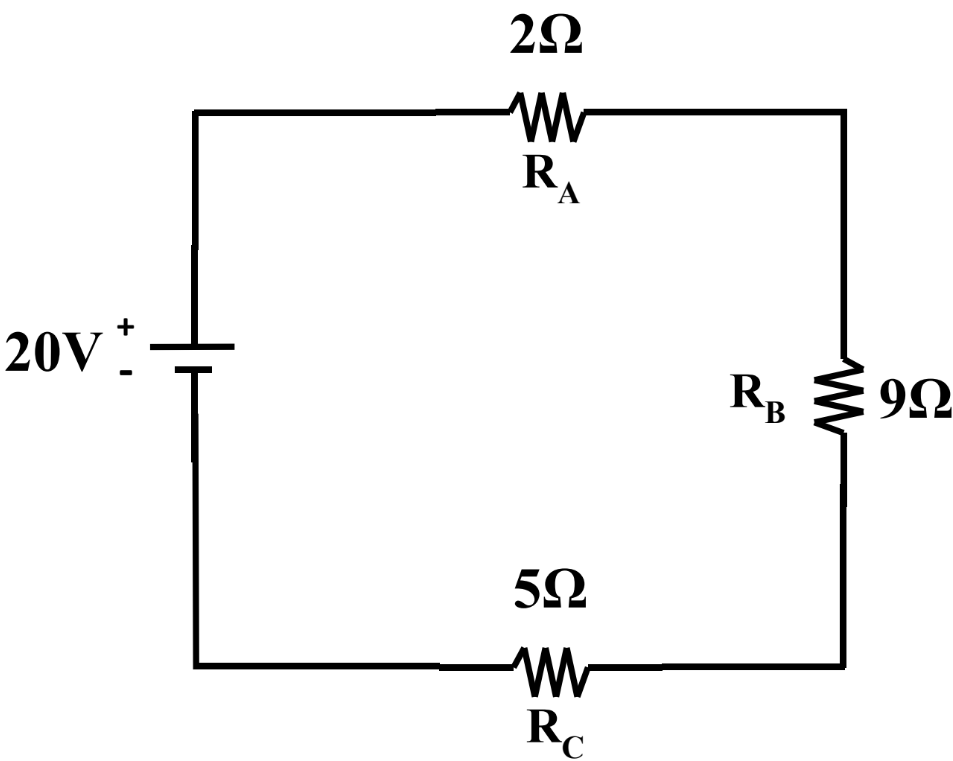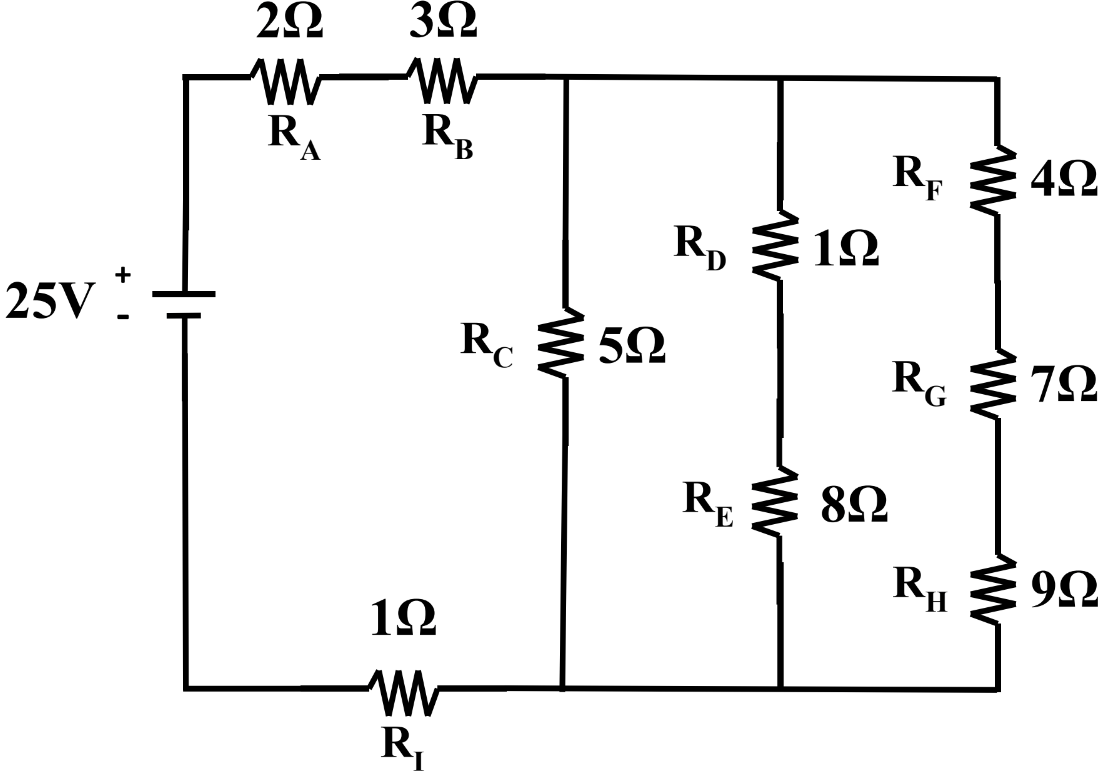In this lesson, we will learn:
- A review on Ohm’s Law and how to manipulate the equation (V=IR) to solve for voltage, current, and resistance.
- How to solve problems for voltage and resistance with a shortcut equivalent of Ohm’s Law; the Voltage Divider Method general formula we will be using is:
- What is the relationship between voltage, current, and resistance?
- When and how to use the Voltage Divider Method to skip to solving questions for voltage and/or resistance without having to first solve for current.
- How we can use the Voltage Divider Method to supplement Ohm’s Law to help us in this chapter
Notes:
- The Voltage Divider Method is a formula we can utilize as a shortcut to Ohm’s Law in certain cases—when the electric circuit question is asking for voltage and/or resistance, it is no longer necessary to solve for the electric current before calculating the voltage across center resistors.
- The general formula for the Voltage Divider Method is as follows:
- Where:
- is the voltage drop across a particular resistor
- is the total voltage of the circuit supplied by the battery/source
- is the resistance of a particular resistor
- is the total, combined sum of resistances of the circuit
- In some cases, we will want to apply the voltage divider to only a section of the circuit (i.e. the parallel component only)—not to the entire circuit
- In those cases, the total voltage will reflect the voltage amount of that portion only (i.e. the equivalent parallel resistance; )
- And, the total resistance will reflect the sum of resistances of that portion only (i.e. )
- In other words, you would replace the variables with “total” subscripts with the portion amount only (i.e. = and = )
- If the question provides the current as a given, it usually hints that one or more parts of the question will not require the voltage divider (since the voltage divider formula does not include current)
- If the question asks to solve for the current, it will require Ohm’s Law () and can be supplemented by the voltage divider method depending on the question









